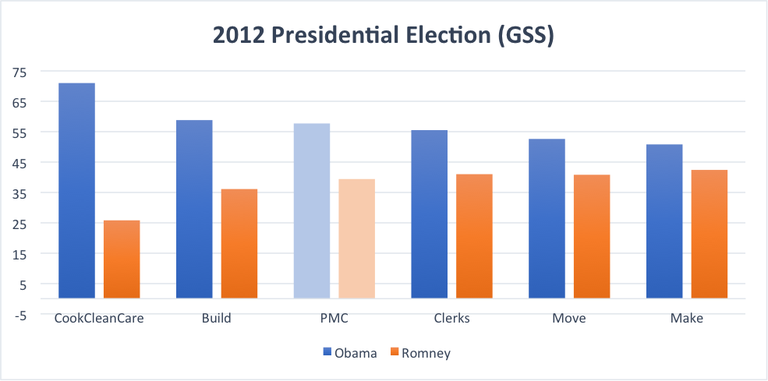WCP: Fractions within the Working Class
Posted in Visiting Scholars | Tagged 2016 Election, Allison L Hurst, John Russo, Sherry Linkon, WCP, Working Class, Working-Class Perspectives, Working-Class Voters
As Allison L. Hurst writes in this week’s Working-Class Perspective, discussing the working class in the U.S. as a unified block ignores the immense complexity and diversity of working people. Even a focus on race, gender, and geography neglects important divisions in the demographic. Hurst introduces a more nuanced approach of classifying the working class in five broad job categories, which provide clearer insight into working-class voting patterns and culture.
“Let me give you a snapshot of five fractions of the working class: the Builders, the Makers, the Movers, the Clerks, and those who Serve (I call this category “CookCleanCare” to remind myself of the range of work within this fraction). Builders most fit the stereotype of “the working class” (three-quarters are men, most are white, and many of them do wear hard hats at work), but it is only one fraction. A more diverse lot are Makers, including assembly-line workers, tool-and-die makers, sewers, and cabinetmakers. This is the fraction that has seen the largest influx of women in the past few decades, although still mostly male. Movers include a wide array of transport jobs, from UPS drivers to ambulance drivers to long-haul truckers, also mostly men. Most of those in the other two fractions are female. The CookCleanCare group includes those who prepare our food, clean our messes, and care for our children. The Clerks are our growing retail worker category. Back in the day being a clerk was seen as a move up, but today’s clerks are generally poorly paid and even less likely to hold a college degree than CookCleanCare workers (the most educated fraction).
Here are some other interesting differences between the fractions. Builders are the most likely to be living in the same place where they grew up, Makers the least likely. Movers are the most likely to identify themselves as “working class.” Twice as many Builders as Makers think of themselves as “middle class.” Makers, in contrast, are more likely than the others to think of themselves as “lower class.” In terms of income, Builders make the most money, Movers the least. If we looked only at white men in each of the fractions, we would find the most instances of sexism, nativism, and racism among the Makers, perhaps reflecting the fact that this group has seen the biggest changes over the past few decades. But it is important to note that a greater proportion of rich white men and white male managers express racist views than any working-class fraction does.
During the past decade or two, ever since Reagan really, we have been hearing a lot about how “the working class” has turned its back on the Democratic Party. But this is only true if we limit “the working class” to white men without college degrees. If we include the whole of the working class, this claim is simply wrong. According to my analysis of GSS data, there has never been a presidential election in which the majority of the working class voted for the Republican candidate.”
Read the post in its entirety and explore other Working-Class Perspectives posts on our website.

